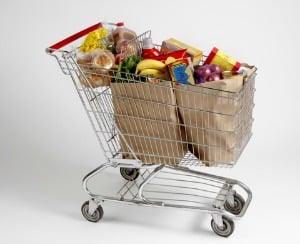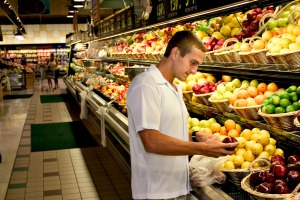 Looking ahead at the new year, the food and beverage industry is slated to experience both new and continued trends. While overall retail sales will continue to climb, some dynamic shifts will also occur. To find out some of the projected upcoming trends for 2014, we reviewed The Future of Food Retailing in the U.S.: Shopper Insights and Market Opportunities, 4th Edition, a report published by leading food and beverage industry experts Packaged Facts.
Looking ahead at the new year, the food and beverage industry is slated to experience both new and continued trends. While overall retail sales will continue to climb, some dynamic shifts will also occur. To find out some of the projected upcoming trends for 2014, we reviewed The Future of Food Retailing in the U.S.: Shopper Insights and Market Opportunities, 4th Edition, a report published by leading food and beverage industry experts Packaged Facts.
Here are several of the most interesting projected trends for 2014:
1. Overall food and beverage retail sales will continue to rise throughout 2014. Packaged Facts predicts sales to reach $667.5 billion next year, which is a 4.5% increase over 2013's sales of $638.8 billion. When broken down, this influx accounts for only 1-2% in actual unit growth, but also takes into account an estimated inflation rate of 3-4%. Sales are expected to gain momentum throughout the year and continue to grow, reaching an expected $796 billion by 2018.
2. Sales of private label products will continue to grow, reaching $133 billion by 2016. When the recession hit in 2008, the sales of private label products began growing at a steady pace. In just four years from 2008 to 2012, sales increased from $82.8 billion to $104 billion. During this time, private labels gained much favor and popularity. Now that the economy is steadily building again, private label sales are continuing to grow due to improved quality and increased marketing. In fact, many shoppers have found store brands that are comparable or that they prefer to leading national brands' products.
 3. Fresh foods will continue to hold more and more importance in shoppers' retailer preference. When it comes to choosing a regular food and beverage retailer, there are several key factors people consider. In The Future of Food Retailing in the U.S.: Shopper Insights and Market Opportunities, 4th Edition, Packaged Facts sites FMI's study U.S. Grocery Shopper Trends 2012, revealing that in addition to competitive prices and cleanliness, due to growing health and wellness awareness, high quality produce and fresh foods are now one of the most important determining factors in where consumers shop. Because of the increasing importance of fresh foods, supercenters can no longer rely on commodity pricing to maintain their customers. In fact, in Why Retailers are Keeping it Fresh: Fresh Foods Not Spoiled by Inflationary Heat, Nielson Perishables Group predicts that during 2014 and the following years, supermarkets will begin to lose market share to the larger supercenters, who are now placing more importance on the quality of these items.
3. Fresh foods will continue to hold more and more importance in shoppers' retailer preference. When it comes to choosing a regular food and beverage retailer, there are several key factors people consider. In The Future of Food Retailing in the U.S.: Shopper Insights and Market Opportunities, 4th Edition, Packaged Facts sites FMI's study U.S. Grocery Shopper Trends 2012, revealing that in addition to competitive prices and cleanliness, due to growing health and wellness awareness, high quality produce and fresh foods are now one of the most important determining factors in where consumers shop. Because of the increasing importance of fresh foods, supercenters can no longer rely on commodity pricing to maintain their customers. In fact, in Why Retailers are Keeping it Fresh: Fresh Foods Not Spoiled by Inflationary Heat, Nielson Perishables Group predicts that during 2014 and the following years, supermarkets will begin to lose market share to the larger supercenters, who are now placing more importance on the quality of these items.
4. Emphasis on healthy eating will continue to make its way into schools and alternative food and beverage retail options. With continued focus on health-conscious offerings, alternative food and beverage retailers will experience some change during 2014 as well. Most notably, by the fall start of the 2014 school year, the USDA's "Smart Snacks in Schools" initiative will take effect, banning the sale of sugary and unhealthy snack foods and drinks from vending machines located in public schools nationwide. Traditional vending machine items, such as candy, cookies and sugary drinks, will be replaced with healthier offerings like whole wheat crackers, fruit cups and fat-free milk.
Interested in learning more about food & beverage trends? Download our free white paper on identifying food trends, or check out our Culinary Trend Tracking Series.
Thanks for reading!
Ashlan Bonnell
Managing Editor,
MarketResearch.com


